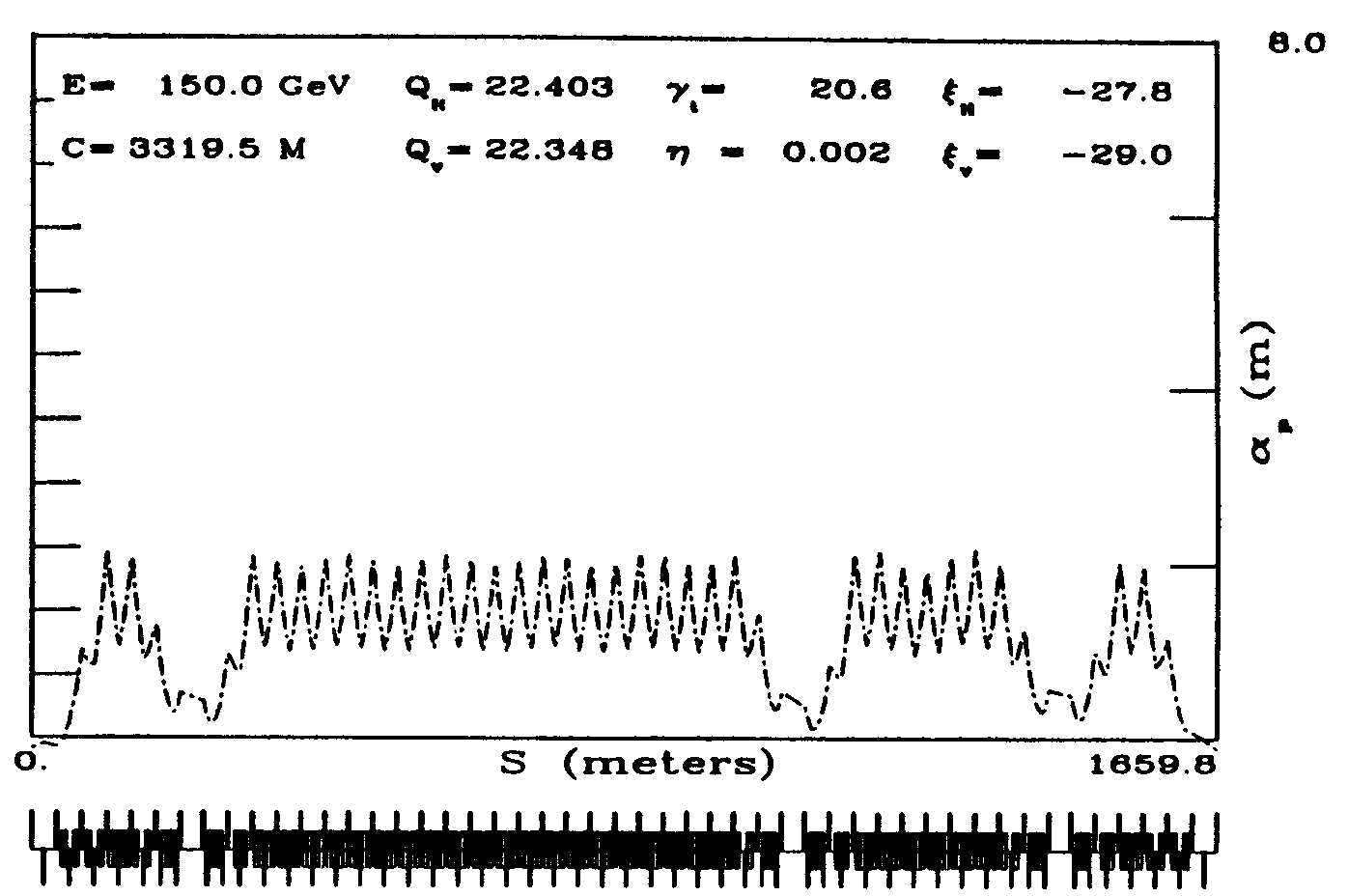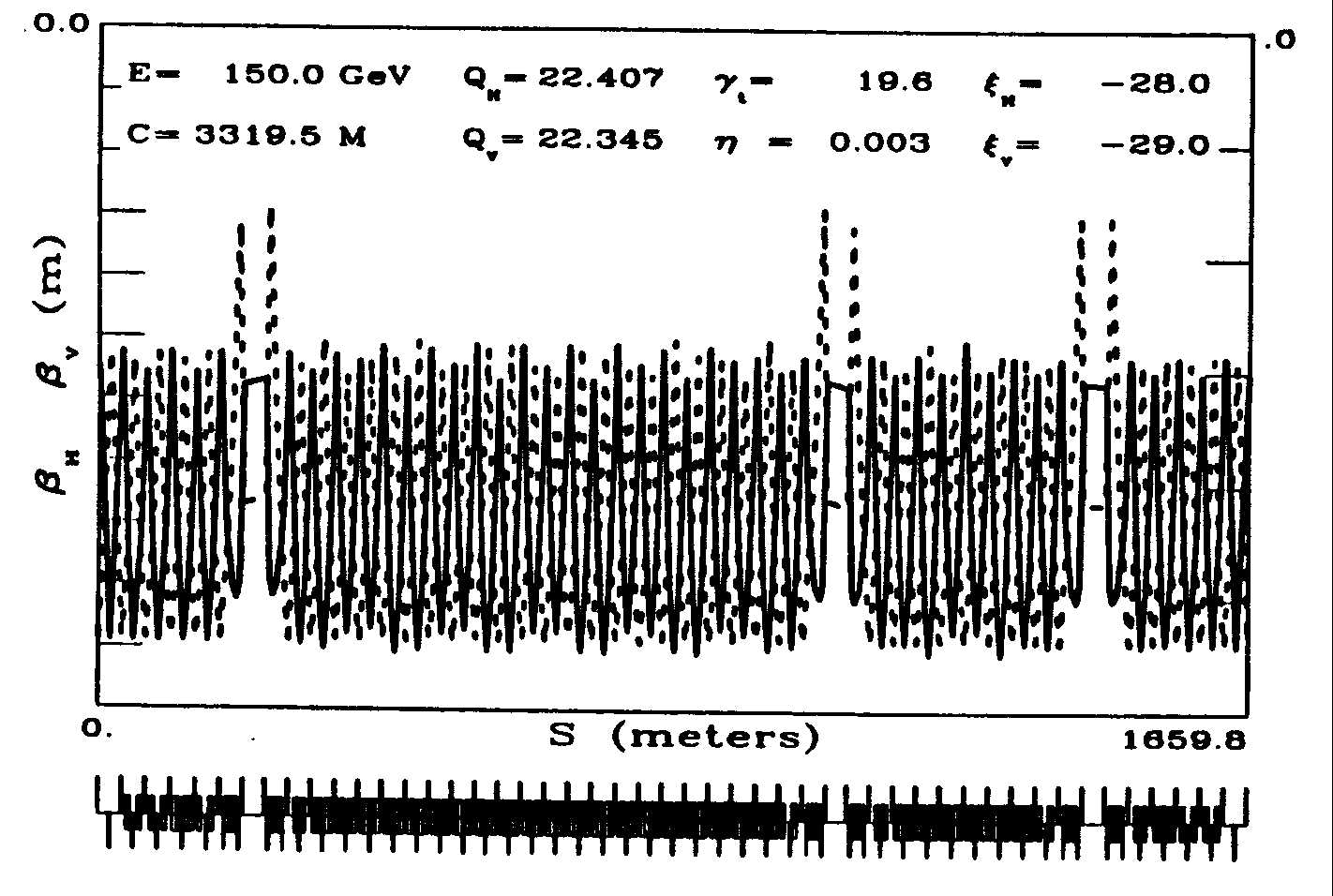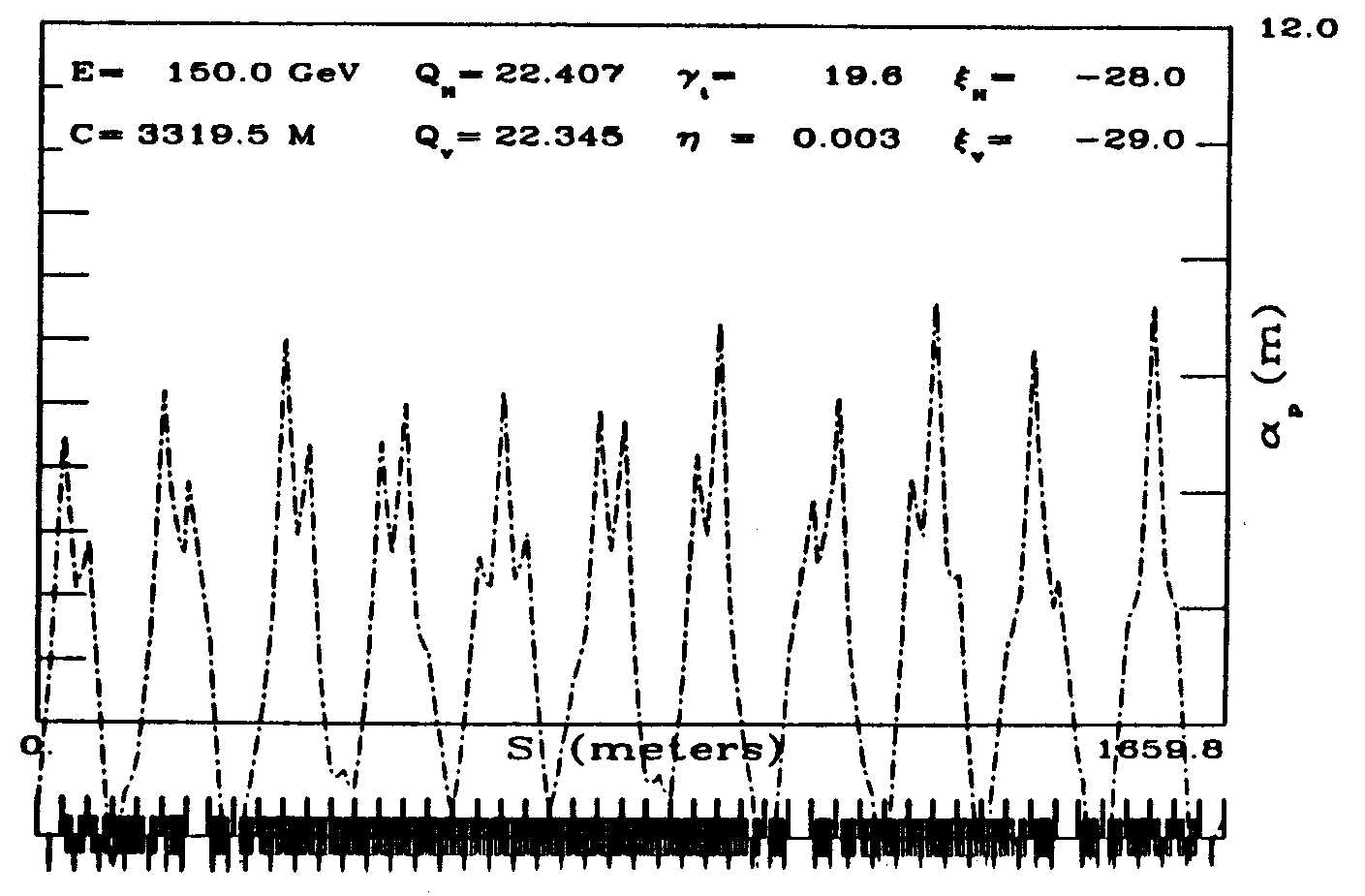Concerns have been expressed about the ability of the Main Injector to accelerate high intensity (greater than a few times 1010 per bunch) beams through transition. The Main Injector as designed has a transition gamma (gt) of 20.4. The beam is accelerated through transition at a rate,
![]()
There are two approaches to dealing with potential transitions crossing problems: 1)redesign the lattice so that the transition energy lies either below the injection energy or above the extraction energy; or 2)install a "rt-jump system. The first approach is described elsewhere in this report. A possible implementation of a gt jump system is described here.
Gamma-t jump systems are currently implemented in the Fermilab and CERN Boosters. Such systems rely on pulsed quadrupole magnets to change the optics of the accelerator in such a way as to drop instantly (~100 ksec) the gt of the machine as the beam approaches transition. In a typical implementation, e.g. in the Fermilab Booster, the gt of the accelerator is dropped by one unit over a 100 psec period when the beam is one-half unit below transition. As a result the beam suddenly finds itself one-half unit above transition. Quantitatively, the beam is accelerated through transition at a rate,
![]()
This rate is more than an order of magnitude greater than the raw beam acceleration rate, dg/dt. The implementation of the gt jump system in the Booster has resulted in nearly complete preservation of longitudinal emittance through transition at beam intensities up to the present operational limit--about 4x1010 per bunch.
We have examined possible implementation of a gt jump system in the Main Injector with the reference lattice. The scheme is similar to that used in the Fermilab Booster with pulsed quadrupole magnets arranged in such a manner as to perturb the dispersion function while leaving the beta function (and tunes unaffected). The arrangement chosen takes advantage of the 90' cell structure of the Main Injector. Two families of pulsed quadrupoles are required--a focusing (F) family with elements placed adjacent to every fourth main focusing quadrupole (i.e. every 360' of betatron phase), and a defocusing (D) family with elements 180' out of phase with the F family. The effect of the perturbation on the dispersion is proportional to a sum of terms which look like Sqisinfi, while the effect on the beta functions looks like Sqisin2fi. This me&s &at with the arrangement described above the machine'dispe&ion is drastically changed while the beta functions remain nearly unaffected.
An example is shown in the accompanying figure. The upper plots show the betatron (left) and dispersion (right) functions for the reference design. The bottom figure shows the betatron and dispersion functions in the presence of the perturbation described above. The strength of the F and D pulsed quadrupoles are chosen to lower gt by one unit in this case.
Three values of gt were examined. The optical properties, and pulsed quadrupole strengths required, are given in the table below. The pulsed quadrupole strengths given represent about 6% of the main quadrupole strength and assume twelve magnets in each family. No thought has been given to possible implementation of the pulsed quadrupoles. For reference the Fermilab Booster gt-jump quadrupoles have òGdl = 0.12 kGauss.
| Possible Transition Jump Parameters in the Main Injector | ||
|---|---|---|
| Dgt | Maximum Dispersion (meters) | òGdl (F/D), kGauss |
| 0.0 | 2.2 | 0.0/0.0 |
| -.5 | 2.2 | 2.7/2.6 |
| -1.0 | 7.0 | 3.8/3.7 |



